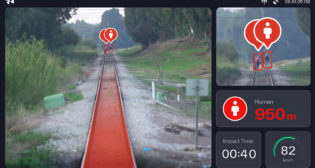
New USDOT Deputy: Polly Trottenberg
Written by Marybeth Luczak, Executive Editor
Polly Trottenberg, Deputy Secretary of Transportation designee
Former New York City Transportation Commissioner Polly Trottenberg has been tapped as U.S. Deputy Secretary of Transportation.
President-elect Joe Biden made the announcement Jan. 18. She is slated to serve under Pete Buttigieg, Transportation Secretary nominee and former Presidential candidate and South Bend, Ind. Mayor.
In the Obama-Biden Administration, she held the position of Assistant Secretary for Transportation Policy and Under Secretary for Policy at USDOT.
She stepped down late last year as Transportation Commissioner for Mayor Bill de Blasio, a role she held since 2014, overseeing New York City’s transportation network of roadways; bridges; traffic and parking systems; the Staten Island Ferry; and bicycle, pedestrian and public plaza infrastructure. At the New York City Department of Transportation, she focused on improving transportation equity and access, including implementation of the 14th Street Busway, and led the agency’s COVID-19 response and recovery. Trottenberg also helped implement the nation’s first Vision Zero program, which takes a multi-disciplinary approach to eliminating “traffic fatalities and severe injuries, while increasing safe, healthy, equitable mobility for all.”
Amtrak Board Chair Tony Coscia issued this statement in support of her nomination as Deputy Secretary of Transportation:
“Polly Trottenberg will be a great addition to the U.S. Department of Transportation. With decades of transportation experience, Ms. Trottenberg understands the importance of investing in transportation to expand mobility, reduce carbon emissions and support economic recovery. As we [Amtrak] enter our 50th year of service, we look forward to working with President-elect Joe Biden, Transportation Secretary designee Pete Buttigieg and Deputy Secretary Polly Trottenberg to launch a new era of passenger rail expansion and improvement across the nation, connecting more people by train.”



